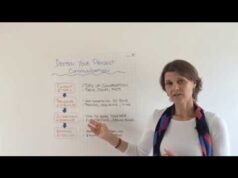Authored by Jane Adshead-Grant
“2020 is not turning out to be a very good year, first with the pandemic and now with the social unrest”, our daughter declared the other evening.
Listening to Hannah share her thoughts and feelings got me thinking. What if 2020 is the perfect vision we have been given to see the world afresh, with new eyes, open hearts, and ears to listen more deeply, free from judgment? What if 2020 is the year we embrace change, in a way unlike we have ever done in the past? What if we would, more intentionally, generate the best thinking in others and ourselves, for the good of all? What if – with creativity, courage, and commitment – we chose to become a thinking environment for others?
This last question is one I had the opportunity to think through in the presence and exquisite attention of my friend and fellow Thinking Environment specialist, Claire Andrews. You can watch or listen to a short section of our session below;
What does it mean to be a Thinking Environment?
My understanding of what this means is based, first and foremost, on that stunning observation that Nancy Kline made: the quality of everything we do and feel as a human being depends on the quality of the independent thinking we do first. Secondly, I notice that what and how we think determines how we show up in the way we connect with others. And, thirdly, what we think impacts our lives in the way that we feel: joy or sadness, liberated or limited, hope or resignation.
A Gift of Love
I believe that being a thinking environment is a gift of love. And, truly, it’s hard. In the same way, that falling in love can seem easy but staying in love can be hard. Not because we don’t want to, but because the challenges that life presents, that are out of our control, can sometimes put stress on that love. Being a thinking environment is a gift of love, and anything that is as rich and as deep as love is worth having. If we want something bad enough, it is worth working for and committing to.
A Radical Approach
We are rewarded for taking in the knowledge of those more experienced around us, and then repeating it back or rewriting it.
Being a thinking environment is radical because we are inviting people to think for themselves, as themselves. In our society, from our earliest days, through our education system, we have been given information to learn and regurgitate and we have been told to conform. We are rewarded for taking in the knowledge of those more experienced around us, and then repeating it back or rewriting it. It’s not until we move through more senior education that we are invited to share our own views on a topic. I witness this for our daughters right now as they study A levels. It is a big shift for them, and a thrill to see and hear how they are invited to form their own opinions through their reading and the conversations they are having with peers and teachers.
Equally, I notice that the university education system teaches a lot of technical knowledge and many hugely valuable skills – the abilities to think critically, write well, make an argument, debate. And yet the skill of listening – listening to generate the best in others – isn’t part of the curriculum.
Listening Free of Judgment, with Empathy
When we listen free of judgment, we allow the mirror neurons of empathy to do their work.
To be a thinking environment for others is to master the art of listening, free of interruption, free of judgment. When we listen free of judgment, we allow the mirror neurons of empathy to do their work. One of the components of being a thinking environment is giving our attention. It is giving palpable respect for another’s thinking and to where they may go next, rather than simply waiting to reply. It’s giving our attention with our eyes on the eyes of the thinker and noticing their face, noticing those small intricacies of how they move their mouth, their eyes and their eyebrows as they’re thinking. It’s giving our attention to the reaction within our own bodies as we listen, and then quietening it to give our attention to the thinker once more.
Listening to Free rather than Direct the Mind
To be a thinking environment for others is to free them. It is to free their mind rather than direct it. I also believe that, through no fault of anyone’s, we have fallen into the trap of depending on others’ thinking. Not that this is wrong, because there is a place for us to learn from others. It is incredibly enriching.
As a leader of a business and as a parent I want to listen and learn from others. New information can help us make better decisions and discern what we need to do differently. Generating the best independent thinking in others in this world is rare. It’s rare because people are not used to doing it or experiencing it.
Listening to Release Creativity
Being a thinking environment for others enables creativity to emerge. The thinking it can ignite – way outside the box – never, ever ceases to amaze me. The nature of independent thinking is our capacity to tap into that innate creativity, that willingness to be a vulnerable explorer. Because when we remove the outer layers we have put on over the years, to protect ourselves and others – the layers accumulated through our experiences, the environments we have lived and worked in, the people we have met – we reveal the innate creativity and resourcefulness we have been granted as a human being.
Listening to Deepen Self-Awareness
The thing that touches my heart most of all, whenever I have the privilege of being a thinking environment, is the level of self-awareness someone can experience as a result of the quality of attention that they receive.
It is a privilege to hold a non-judgmental view, a positive philosophical view, that the human being in front of me, the mind in front of me, is an oasis of richness
To witness their gifts and their talents, some of which they may not realize they have, or have not surfaced because they haven’t been given the opportunity to express themselves as themselves. To observe the sense of ease they experience, free from the need to be or say what they think others want them to be or say.
Listening with the Promise not to Interrupt
It’s not just that I’m not going to interrupt you. It’s the fact that you know I’m not going to interrupt you. That is the difference and it is significant. Because it gives you that chance to really think for yourself, not being in fear that, any minute, I’m going to jump in, either to paraphrase what you’ve said, to seek understanding or to ask you a question that will take you away from your thoughts and feelings. Being a thinking environment is one of the most dignifying and respectful ways that we can treat and be with another human being.
How do we Help others Think Well for Themselves?
The finest independent thinking emerges when we demonstrate a particular set of behaviors towards others. Applied individually they make a difference to the quality of thinking. Embodying them as a system has a transforming effect. Helping others to think well for themselves with rigor, courage, imagination, and grace is to behave in ways that let other people know that they matter. Here’s how we can do it.
Giving our Attention
Giving my attention, a palpable respect for what you are saying, an interest in where you might go next, and a promise that I won’t interrupt you as you share your thoughts, feelings, and ideas.
Being at Ease
Being at ease ourselves as the listener, the thinking partner, free of the internal rush that we might have or the urgency that life might impose upon us.
Holding Equality
Holding the sense of equality that we all have equal capacity to think for ourselves, as ourselves, and that we will take equal turns to speak.
Giving Encouragement
Giving others courage, encouraging them to go to the edge of their thinking, perhaps where they haven’t thought before. We do that not only with our attention, but also with the questions we might ask: “What more do you feel or think or want to say?” to encourage them to think further and express more of how they feel.
Offering Appreciation
When we appreciate others for a quality we recognize in them – five times more than we critique their ‘learning needs’ or ‘development areas’ – they will think more imaginatively.
Expressing Feelings
Holding a safe environment for others to express their feelings, freeing them to think more clearly. Pent up feelings, or fears of retribution for self-expression, cloud and stifle thinking.
Sharing Information
Helping others think well for themselves means being willing to share information when they ask for it. The discipline here is to only offer information that comes from our own experience and feelings, free from attachment, that will assist their thinking further, rather than giving infantilizing advice. Sharing information also involves acknowledging what is in the room; the context in which we are thinking, working, and living.
Celebrating Difference
Recognizing our differences and celebrating them. Each and every one of us is unique as a human being. That is the reality. And we all think better when we celebrate that difference and ensure that we bring it into our organizations, into our communities, into our projects, into our teams, into our families.
We have difference in our family. I celebrate it, that our daughters look different; one has blonde hair, the other dark. They have some wonderful common values and yet they think very differently. It’s challenging. I have to get ready for it. Here come the challenging questions, here come the pushbacks. It’s ok, it shows me they are independent women navigating their life. It doesn’t go unnoticed to me that they bring difference to our family, and I love that.
Asking Incisive Questions
Developing the capacity to ask incisive questions, those questions that bust through limiting assumptions. When we challenge a limiting assumption that is untrue, we can create a new, more liberating alternative and pose it in a question that’s hypothetical, one that enables the brain to play rather than obey. If you knew that you had everything you needed in order to take this next step in your life, what would you do now?
Creating a Place that says “You Matter”
Helping others think well for themselves is to create a place that says “You matter”. It is about paying attention to the environment itself: Have I taken care of your needs? Have I thought about what will make this environment comfortable? Is it clear? Is it free of distraction? Are there enough seats for everyone to sit? Is there water for everyone? Place also includes our own physical bodies. Are we refreshed? Do we need a bio-break so we can think well and contribute? And, as the listener, the quality of attention you are giving is generating a place that says “you matter”.
To be a thinking environment is to be a catalyst, to potentially ignite a transformation in others, to provide a space for them to be their best selves.
Why does it matter?
Transforming our Perspectives
Each and every human being on this planet – whatever colour, whatever gender, whatever age they are – deserves to be treated with dignity and respect.
I’m noticing, more than ever now, that it’s not the differences that generate the unrest, the disturbance, and the suffering that we see in our world today. It is the assumptions that we hold about those differences. The assumptions that we have grown up with. The assumptions we have become embroiled in from watching television or social media. And this is why independent thinking matters. Because it breaks limiting assumptions open. Because it liberates every one of us to think freely, to speak up for what we believe, what we know to be true. Each and every human being on this planet – whatever color, whatever gender, whatever age they are – deserve to be treated with dignity and respect. And we can achieve this when we endeavor to become a thinking environment for others. This is why it matters.
Transforming our Contributions
As I reflect, how could it not be? How could being a thinking environment not matter? I come back to the idea that being in a thinking environment is a gift of love. Anybody and everybody deserve to be loved. Anybody and everybody have the capacity to love.
I believe that being a thinking environment is a gift, one that we can learn, we can practice, we can master. And when we do so, we are enabling somebody to be who they were meant to be. To think for themselves, as themselves. To enrich their own life, to contribute to the lives of others, and to make a difference in the world. That’s why it matters.
Transforming our Struggles
Taking a decision to show up as a thinking environment is to make a positive philosophical choice about people, and about the goodness in the world, and to be willing to create this environment for others.
Thinking independently also generates a sense of hope. As I think of people I’ve met, and stories of huge struggle I’ve listened to, what’s kept people going and got them out of struggle is their sense of hope. Taking a decision to show up as a thinking environment is to make a positive philosophical choice about people, and about the goodness in the world, and to be willing to create this environment for others. It’s about being determined and disciplined. To resist the urge to interrupt. To resist the urge to fix somebody else. To resist the urge to fix the problem for somebody else. To create the opportunity for people to grow for themselves as themselves. To encourage them to navigate their way through a crisis and develop their gifts and talents as a human being. To respect and celebrate their uniqueness.
Transforming each other
I am reminded of a beautiful woman who I’ve been coaching pretty much since the start of lockdown. She lives in New York and we’ve had some incredible sessions together. I was on the edge of my seat in giving my attention and listening to her: her sense of stuckness, her assumptions about her safety, her levels of anxiety, her lack of clarity in her role, her lack of confidence in herself as a leader, and how all of these thoughts manifested themselves both physically and mentally.
Our work has been transformational. My client had not experienced a thinking environment or even coaching before, and she was unsure whether it would work, whether it would land. After our very first session, she shared how empowered she felt and how the whole process has been transformational for her. She boldly admitted how sometimes she would reflect, ”I would love for you to tell me and just give advice, but I know that’s not how it works and I know I am better than that”. So even her own acknowledgment of how she has managed to stunningly navigate this period, her own very turbulent journey, has been remarkable.
I will always hold, deep in my heart, this amazing woman and how she has navigated this time personally and professionally, physically and mentally, to witness her resourcefulness, creativity and personal growth. This is why it matters, more than ever in our world today.
What if?
What if 2020 is the perfect vision we have been given to see the world afresh, with new eyes, open hearts, and ears to listen more deeply, free from judgment? What if 2020 is the year we embrace change, in a way unlike we have ever done in the past? What if we would, more intentionally, generate the best thinking in others and ourselves, for the good of all? What if – with creativity, courage, and commitment – we chose to become a thinking environment for others?
Thank you for reading.








